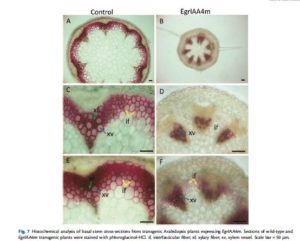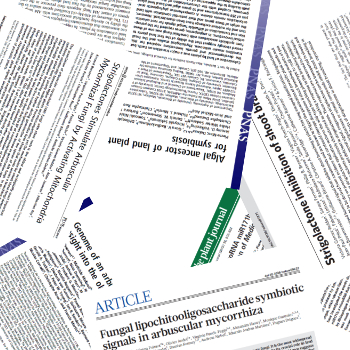Notre Equipe
Fabien MOUNET
Maître de Conférence UPS - Directeur d'équipe
fabien.mounetATuniv-tlse3DOTfr

Raquel MARTIN-AREVALILLO
Maître de conférence UPS
raquel.martin-arevalilloATuniv-tlse3DOTfr

Hua WANG-CASSAN
Maître de Conférence UPS
hua.cassanATuniv-tlse3DOTfr

Nathalie LADOUCE
Assistante Ingénieur CNRS
nathalie.ladouceATuniv-tlse3DOTfr

Annabelle DUPAS
Assistante Ingénieur UPS
annabelle.dupasATuniv-tlse3DOTfr

Hélène FOUASSIER
Ingénieur d'étude
helene.fouassierATuniv-tlse3DOTfr
Anciens membres
Marie-Chantal TEULIERES (Professeur UPS)
Ines HADJ BACHIR (Doctorante 2019-2022)
Jacqueline GRIMA-PETTENATI (Chercheuse CNRS – Directrice d’équipe)
Maylis GALLOIS (post-doctorante)
Ying DAI (Doctorante)
Christiane MARQUE (Maître de conférence UPS)
Camille RIBEYRE (CDD- Assistant Ingénieur)
Raphaël PLOYET (Doctorant 2013-2016)
Isabelle TRUCHET (Maître de Conférence UPS )
Jorge LEPIKSON-NETO (Post-doctorant, 2014-2015 )
Marçal SOLER (Post-doctorant, 2010-2015 )
Anna PLASENCIA (Doctorante SEVAB, 2012-2015)
Chien NGUYEN (Doctorante SEVAB, 2012-2015)
Hong YU (Doctorante SEVAB, 2010-2014)
Eveline TAVARES (Doctorante, 2014)
Bang CAO (Doctorant SEVAB, 2010-2013)
Annette NASSUTH (Professeur invité, Guelph university, Canada, 2012-2013)
Audrey COURTIAL (Doctorante 2009-2012)
Sahar AZAR (Doctorante 2009-2012)
Mohammed Najib SAIDI (Post-doctorant 2011-2012)
Nadia GOUE (Post-doctorante 2010-2012)
Eduardo CAMARGO (Doctorant Brésilien 2010-2011)
Malha AMGOUD (Doctorante Algérienne 2010-2011)
Nicolas AMELOT (Doctorant 2006-2010)
Marie NAVARRO (Doctorante 2005-2009)
Gilles MARQUE (Doctorant 2004-2008)
Sylvain LEGAY (Doctorant 2003-2008)
Pierre SIVADON (Maître de Conférence Université de Pau)
Thèmes de Recherche
Background and objectives
Wood, the most abundant lignocellulosic biomass on earth, is widely used for lumber and paper manufacture and increasingly exploited as an environmentally cost-effective, renewable source of energy. It is produced through a complex differentiation process leading to highly specialized xylem cells characterized by thick lignified secondary cell walls [SCWs]. The major technological barrier to the efficient use of lignocellulosic biomass for biofuels is the SCWs’ recalcitrance to degradation.
Wood formation is also highly plastic and involves the dynamic integration of environmental signals into complex developmental pathways, resulting in functional adaptation to environmental conditions. These adaptative strategies are crucial for trees that, as perennial long-living organisms, have to face challenging and contrasting environmental conditions enhanced in a context of global climate change.
The main goal of the “Eucalyptus functional genomics” group is to understand the transcriptional and post-transcriptional regulation of wood formation during development and in response to environmental cues. Such an understanding of the regulatory networks underpinning wood formation is crucial for improving sustainability, productivity and wood quality of tree plantations in order to meet the increasing demand of wood while preserving natural forests and biodiversity.
Our target plant is Eucalyptus, the first planted hardwood tree in the world [20M ha] because of their rapid growth rate, broad adaptability to diverse edaphoclimatic conditions. Eucalyptus represent one of the most appealing sources of renewable lignocellulosic biomass feedstock.
- Genome wide analyses of lignin genes and transcription factor families
- New regulators of wood formation
- Hairy root transformation to study SCW genes
- Wood regulatory networks under abiotic stress conditions
- Behind trade-offs
- Regulating the regulators
E.grandis is the second forest tree whose genome has been sequenced [Myburg et al, 2014]. Our team has been involved in the genome assembly and annotation [Myburg et al. 2014] and performed in-depth genome-wide analyses of ten lignin gene families [Carocha et al, 2015] and of key transcription factors families: R2R3-MYBs [Soler et al, 2015], NACs [Hussey et al, 2015], ARFs [Yu et al, 2014] and Aux/IAAs [Yu et al, 2015], AP2/ERF and GRAS [Cao et al, 2015]. The genome-wide study of these gene families highlighted some new features.
For instance, the comparative phylogenetic analysis of the R2R3 MYB [Fig. 1, left] stressed out some subgroups that were more expanded in woody plants than in herbaceous plants [Fig.1 purple table], and strikingly new subgroups that seem to contain only members from woody plants, being absent in Arabidopsis and rice [Fig.1, pink table] [Soler et al, 2015]. Ninety four % of the tandem duplicated R2R3-MYB genes belong to those woody-expanded and woody-preferential subgroups [Fig.1, E. grandis chromosomes]. Remarkably, all members of three woody-preferential subgroups are preferentially expressed in secondary cambium, whose activity is responsible for secondary-growth, one major feature of woody perennial plants.

Figure 1 adapted from [Soler et al, 2015]
By combining comparative phylogenetic analyses and large scale expression profiling in organs, tissues and in responses to abiotic stresses, we identified promising candidate genes possibly involved in the control of wood formation during development and in responses to stresses.
We chose some of these candidate transcription factors according to their expression patterns and novelty for functional characterization and transformed Arabidopsis and poplar lines with overexpressing and/or dominant repressor constructs.
As an example, the ectopic expression of a stabilized version of an E. grandis Aux/IAA gene [EgrIAA4m] in Arabidopsis reduced dramatically primary and lateral growth resulting into dwarf plants with very thin stems [Fig. 2]. The development of the interfascicular fibres was strongly inhibited [Fig. 2, Yu et al 2015].



Fig 3. A. Eucalyptus plants transformed with A. rhizogenes harbouring a plasmid with 35S:GFP were detected under fluorescence 21 days after infection. B. Composite plants resulting of the A. rhizogenes transformation were hardened in pots with inert substrate and are ready to be harvested after 60-90 days after infection. C. Suitability of this system was assessed by transforming Eucalyptus with the antisense construct of the CCR gene, showing hairy roots section stained with phloroglucinol reagent with thinner xylem cell walls and lower lignin content. D. Deeper analysis using Scanning Electron Microscopy demonstrated thinner xylem cell walls with a phenotype resembling to irregular xylem, as previously observed [Piquemal et al. 1998].
Wood formation is highly plastic and secondary cell walls [SCW] structure and composition respond to environmental constraints. We showed that in response to luxuriant nitrogen fertilization, SCWs are weaker and less lignified [Fig 4 (a,b); Camargo et al., 2014]. Cold temperatures trigger the precocious formation of thick and lignified SCWs unusually close to cambium [Fig 4 (c,d); Ployet et al., 2017). Potassium supply and water availability modify vessel size and density (Ployet et al., in prep). Temperature changes and nutrients supply also modify polysaccharides accessibility (saccharification yield), a key parameter for biofuel generation.

Fig 4: Nutrition and temperature modify secondary cell wall (SCW) structure in Eucalyptus xylem. SEM images of Eucalyptus xylem SCW under limiting (a) and luxuriant (b) nitrogen fertilization conditions [Camargo et al, 2014]. Images of Eucalyptus xylem SCW in plant grown at 25°C (c) and in plants grown at 4°C (d) [Ployet et al, 2017].
In order to get a comprehensive view of the regulatory pathways underlying xylem response to abiotic stresses, we developed system biology approaches integrating ‘omics (transcriptomics, metabolomics, epigenetics and genetics) and phenotypic data. Using multivariate analyses, gene network reconstruction, and large-scale data integration, we were able to correlate SCW-related gene modules to wood properties and to further identify new promising transcription factors regulating xylem formation under stress conditions. Altogether system biology approach and functional characterization of CGs, showed that stress-signalling pathways could co-opt the regulatory pathways controlling SCW formation to modify cell differentiation, secondary metabolites accumulation and SCW deposition in xylem.

Fig 5: Targeted gene correlation network highlights Xylem and Cambium specific transcription factors (TFs) regulated by cold. (a) Gene correlation network based on expression profiles of 250 genes including 150 TFs obtained in >30 conditions and or tissues. A “cambium” module contains MYB and NAC TFs induced by cold stress. A “xylem” module encloses new candidate genes potentially involved in SCW formation, such as EgNAC64 (b), strongly correlated to genes described in the regulation and the deposition of SCW, such as EgNAC61 (AtSND1) in (c) [Ployet et al, 2017].

Fig 6: Drought and nutrition can modulate SCW structure and composition through a network of cell wall related genes. We performed a data integration approach on transcriptomic, metabolomic, phenotypic and eco-physiological datasets. WGCNA modules detection highlighted 12 modules related to cell activity, primary and secondary metabolism, ion transport, cytoskeleton, stress response and cell wall formation. Cell wall related modules (1 to 6) were strongly correlated to wood phenotypic traits and new mass signatures corresponding to flavonoids, terpenes and coumarins [Ployet et al, in prep].
To cope with abiotic stresses using limited resources, plants have evolved diverse mechanisms underlying a trade-off between stress tolerance and plant growth. However, to date, the precise molecular mechanisms involved in this trade-off are yet to be investigated.
Given its opportunistic growth without endodormancy, Eucalyptus represents a suitable model to address this question. On various woody species including Eucalyptus, abundant transcriptomics data have highlighted the DREB1/CBF (“Drought Responsive Element Binding/ CRT-repeat Binding Factor”) as a key transcription factor in the cold-induced regulation (Wisniewski et al, 2014). Moreover, the spectacular increase of CBF family members in Eucalyptus compared to other species, suggests that these transcriptional factors are master regulators of cold tolerance in this species (Cao et al 2015). Together with the comparison of Eucalyptus species (Nguyen et al, 2017), the phenotype of Eucalyptus CBF-overexpressors (CBF-OE) provided strong evidence of the involvement of CBF in the cross-talk between cold tolerance and growth (Navarro et al, 2011; Cao et al, submitted).
Beyond the compromise between primary growth and stress tolerance, a vascular trade-off between conduction efficiency and resistance to cavitation is often described but molecular control is still to be elucidated. Recent investigations on wood properties of Eucalyptus CBF-OE shed a new light on the gene regulation of this trade-off. CBF overexpressors were characterized by modifications of xylem architecture and dynamics of differentiation, both resulting in modulation of lignin content and composition. Interestingly, smaller vessels are associated with lower xylem vulnerability to cavitation which is consistent with improvement of stem frost tolerance observed in CBF-OE (see hypothetic model below). By controlling xylem maturation and architecture under stress, the CBF may be a key in the trade-off between growth and tolerance, representing the balance between efficiency and safety for Eucalyptus as a model tree species.

Hypothetic model of CBF control on the trade-off between growth and cole resistance through modification of xylem architecture.
Because protein-protein interaction is a major mechanism regulating the activity of TFs, we constructed a yeast-two-hybrid library from Eucalyptus xylem and started to seek for the protein partners of EgMYB1, a transcription factor known to repress lignin biosynthesis (Legay et al, 2007, 2010). EgMYB1 interacts specifically with a linker histone variant, EgH1.3. This interaction enhances the repression of EgMYB1’s target genes, strongly limiting the amount of lignin deposited in xylem cell walls. Our results suggest that a complex between EgMYB1 and EgH1.3 integrates developmental signals to prevent premature or inappropriate lignification of secondary cell walls, roviding a mechanism to fine-tune the differentiation of xylem cells in time and space [Soler et al, 2016a].
Collaborations around the world
Publications
2024
- Desaint, H., Gigli, A., Belny, A., Cassan-Wang, H., Martinez, Y., Vailleau, F., Mounet, F., Vernhettes, S., Berthome, R., & Marchetti, M. (2024). Reshaping the Primary Cell Wall: Dual Effects on Plant Resistance to Ralstonia solanacearum and Heat Stress Response. Mol Plant Microbe Interact, 37(8), 619-634. https://doi.org/10.1094/MPMI-05-24-0059-R
- Fugeray-Scarbel, A., Bouffier, L., Lemarie, S., Sanchez, L., Alia, R., Biselli, C., Buiteveld, J., Carra, A., Cattivelli, L., Dowkiw, A., Fontes, L., Fricano, A., Gion, J., Grima-Pettenati, J., Helmersson, A., Lario, F., Leal, L., Mutke, S., Nervo, G., . . . Haapanen, M. (2024). Prospects for evolution in European tree breeding [Prospects for evolution in European tree breeding] [Review Papers]. iForest – Biogeosciences and Forestry, 17(2), 45-58. https://doi.org/10.3832/ifor4544-017
2023
- Kairouani, A., Pontier, D., Picart, C., Mounet, F., Martinez, Y., Le-Bot, L., Fanuel, M., Hammann, P., Belmudes, L., Merret, R., Azevedo, J., Carpentier, M. C., Gagliardi, D., Coute, Y., Sibout, R., Bies-Etheve, N., & Lagrange, T. (2023). Cell-type-specific control of secondary cell wall formation by Musashi-type translational regulators in Arabidopsis. Elife (Cambridge), 12. https://doi.org/10.7554/eLife.88207
- Takawira, L. T., Hadj Bachir, I., Ployet, R., Tulloch, J., San Clemente, H., Christie, N., Ladouce, N., Dupas, A., Rai, A., Grima-Pettenati, J., Myburg, A. A., Mizrachi, E., Mounet, F., & Hussey, S. G. (2023). Functional investigation of five R2R3-MYB transcription factors associated with wood development in Eucalyptus using DAP-seq-ML. Plant Mol Biol, 113(1-3), 33-57. https://doi.org/10.1007/s11103-023-01376-y
2022
- Karannagoda, N.; Spokevicius, A.; Hussey, S.; Cassan-Wang, H.; Grima-Pettenati, J.; Bossinger, G. (2022) Eucalyptus grandis AUX/INDOLE-3-ACETIC ACID 13 (EgrIAA13) is a novel transcriptional regulator of xylogenesis. Plant Mol Biol 2022, doi:10.1007/s11103-022-01255-y.
- H Yu, M Li, Z Zhu, A Wu, F Mounet, E Pesquet, J Grima-Pettenati, H Cassan-Wang, (2022) Overexpression of EgrIAA20 from Eucalyptus grandis, a Non-Canonical Aux/IAA Gene, Specifically Decouples Lignification of the Different Cell-Types in Arabidopsis Secondary Xylem. Int. J. Mol. Sci. 2022, 23, 5068.https://doi.org/10.3390/ijms23095068
2021
- Dumond L, Lam PY, Van Erven G, Kabel M, Mounet F, Grima-Pettenati J, Tobimatsu Y, Hernandez-Raquet G (2021) Termite Gut Microbiota Contribution to Wheat Straw Delignification in Anaerobic Bioreactors. ACS Sustainable Chem. Eng. 9, 5, 2191–2202
2020
- Dai Y, Hu G, Dupas A, Medina L, Blandels N, Clemente HS, Ladouce N, Badawi M, Hernandez-Raquet G, Mounet F, Grima-Pettenati J, Cassan-Wang H (2020) Implementing the CRISPR/Cas9 Technology in Eucalyptus Hairy Roots Using Wood-Related Genes. Int J Mol Sci 21
- Cao PB, Ployet R, Nguyen C, Dupas A, Ladouce N, Martinez Y, Grima-Pettenati J, Marque C, Mounet F, Teulieres C (2020) Wood Architecture and Composition Are Deeply Remodeled in Frost Sensitive Eucalyptus Overexpressing CBF/DREB1 Transcription Factors. Int J Mol Sci 21
2019
- Gomes C, Dupas A, Pagano A, Grima-Pettenati J, Paiva JAP (2019) Hairy Root Transformation: A Useful Tool to Explore Gene Function and Expression in Salix spp. Recalcitrant to Transformation. Front Plant Sci 10: 1427
- Ployet R, Venezio-Labate MT, Regiani Catalidi T, Christina M, Morel M, San Clemente H, Denis M, Favreau B, Tomazello Filho M, Laclau JP, Labate CA, Chaix G, Grima-Pettenati J and F Mounet (2019). A system biology viw of wood formation in Eucalyptus grandis trees submitted to different potassium and water regimes. New Phytol .
- Camargo E, Ployet R, Cassan-Wang H, Mounet F, Grima-Pettenati J. (2019). Digging in wood: New insights in the regulation of wood formation in tree species. Advances in Botanical Research 89: 201-233.
- Hussey SG, Grima-Pettenati J, Myburg AA, Mizrachi E, Brady SM, Yoshikuni Y, Deutsch S. (2019) A Standardized Synthetic Eucalyptus Transcription Factor and Promoter Panel for Re-engineering Secondary Cell Wall Regulation in Biomass and Bioenergy Crops. Acs Synthetic Biology 8(2): 463-465.
- Lin Z, Long JM, Yin Q, Wang B, Li HL, Luo JZ, Wang HC, Wu AM.(2019). Identification of novel lncRNAs in Eucalyptus grandis. Industrial Crops and Products 129: 309-317.
- Tavares EQP, De Souza AP, Romim GH, Grandis A, Plasencia A, Gaiarsa JW, Grima-Pettenati J, de Setta N, Van Sluys MA, Buckeridge MS.(2019). The control of endopolygalacturonase expression by the sugarcane RAV transcription factor during aerenchyma formation. Journal of Experimental Botany 70(2): 497-506.
- Favreau B, Denis M, Ployet R, Mounet F, Da Silva HP, Franceschini L, Laclau JP, Labate C, Carrer H (2019) Distinct leaf transcriptomic response of water deficient Eucalyptus grandis submitted to potassium and sodium fertilization. PLoS One 14(6): e0218528
2018
- Plomion C, Aury JM, Amselem J, Leroy T, Murat F, Duplessis S, Faye S, Francillonne N, Labadie K, Le Provost G, Lesur I, Bartholome J, Faivre-Rampant P, Kohler A, Leple JC, Chantret N, Chen J, Dievart A, Alaeitabar T, Barbe V, Belser C, Berges H, Bodenes C, Bogeat-Triboulot MB, Bouffaud ML, Brachi B, Chancerel E, Cohen D, Couloux A, Da Silva C, Dossat C, Ehrenmann F, Gaspin C, Grima-Pettenati J, Guichoux E, Hecker A, Herrmann S, Hugueney P, Hummel I, Klopp C, Lalanne C, Lascoux M, Lasserre E, Lemainque A, Desprez-Loustau ML, Luyten I, Madoui MA, Mangenot S, Marchal C, Maumus F, Mercier J, Michotey C, Panaud O, Picault N, Rouhier N, Rue O, Rustenholz C, Salin F, Soler M, Tarkka M, Velt A, Zanne AE, Martin F, Wincker P, Quesneville H, Kremer A, Salse J. 2018. Oak genome reveals facets of long lifespan. Nat Plants 4(7): 440-452
- Xu C, Shen Y, He F, Fu X, Yu H, Lu W, Li Y, Li C, Fan D, Wang HC, Luo K. (2018). Auxin-mediated Aux/IAA-ARF-HB signaling cascade regulates secondary xylem development in Populus. New Phytol.
2017
- Ployet R, Soler M, Carocha V, Ladouce N, Alves A, Rodrigues JC, Harvengt L, Marque C, Teulières C, Grima-Pettenati J, Mounet F (2017) Long cold exposure induces transcriptional and biochemical remodelling of xylem secondary cell wall in Eucalyptus. Tree Physiol: 1-14
- Soler M, Plasencia A, Larbat R, Pouzet C, Jauneau A, Rivas S, Pesquet E, Lapierre C, Truchet I, Grima-Pettenati J (2017) The Eucalyptus linker histone variant EgH1.3 cooperates with the transcription factor EgMYB1 to control lignin biosynthesis during wood formation. New Phytologist 213: 287-299
- Nguyen HC, Cao PB, San Clemente H, Ployet R, Mounet F, Ladouce N, Harvengt L, Marque C, Teulieres C (2017) Special trends in CBF and DREB2 groups in Eucalyptus gunnii vs Eucalyptus grandis suggest that CBF are master players in the trade-off between growth and stress resistance. Physiol Plant 159: 445-467
2016
- Barrière Y, Courtial A, Chateigner-Boutin AL, Denoue D, Grima-Pettenati J (2016) Breeding maize for silage and biofuel production, an illustration of a step forward with the genome sequence. Plant Science 242: 310-329
- Plasencia A, Soler M, Dupas A, Ladouce N, Silva-Martins G, Martinez Y, Lapierre C, Franche C, Truchet I, Grima-Pettenati J (2016) Eucalyptus hairy roots, a fast, efficient and versatile tool to explore function and expression of genes involved in wood formation. Plant Biotechnology Journal 14: 1381-1393
- Sixto H, Gonzalez-Gonzalez BD, Molina-Rueda JJ, Garrido-Aranda A, Sanchez MM, Lopez G, Gallardo F, Canellas I, Mounet F, Grima-Pettenati J, Canton F (2016) Eucalyptus spp. and Populus spp. coping with salinity stress: an approach on growth, physiological and molecular features in the context of short rotation coppice (SRC). Trees-Structure and Function 30: 1873-1891
- Soler M, Plasencia A, Lepikson-Neto J, Camargo ELO, Dupas A, Ladouce N, Pesquet E, Mounet F, Larbat R, Grima-Pettenati J (2016) The Woody-Preferential Gene EgMYB88 Regulates the Biosynthesis of Phenylpropanoid-Derived Compounds in Wood. Frontiers in Plant Science 7
2015
Barriere, Y., A. Courtial, M. Soler and J. Grima-Pettenati (2015). « Toward the identification of genes underlying maize QTLs for lignin content, focusing on colocalizations with lignin biosynthetic genes and their regulatory MYB and NAC transcription factors. » Molecular Breeding 35(3).
Li, Q., H. Yu, P. B. Cao, N. Fawal, C. Mathe, S. Azar, H. Cassan-Wang, A. A. Myburg, J. Grima-Pettenati, C. Marque, C. Teulieres and C. Dunand (2015). « Explosive Tandem and Segmental Duplications of Multigenic Families in Eucalyptus grandis. » Genome Biol Evol 7(4) : 1068-1081.
2014
Wisniewski M, Nassuth A, Teulières C, Marque C, Rowland J, Cao PB, Brown A (2014) Genomics of cold hardiness in woody plants. Crit Rev Plant Sci 33 : 92-124.
Courtial A, Méchin V, Reymond M, Grima-Pettenati J, Barrière Y (2014). Colocalizations between several QTLs for cell wall degradability and composition in the F288 x F271 early maize RIL progeny raise the question of the nature of the possible underlying determinants and breeding targets for biofuel capacity. BioEnergy Res 7 : 142-156.
De la Torre F, Rodríguez R, Gago J, Villar B, Álvarez-Otero R, Grima-Pettenati J, Gallego PP (2014) Genetic transformation of Eucalyptus globulus : advantages of using the vascular-specific EgCCR over the constitutive CaMV35S promoter. Plant Cell Tiss Organ Cult 117 : 77-84 .
2013
Keller G, Cao PB, San Clemente H, El Kayal W, Marque C, and Teulières C. (2013) Transcript profiling combined with functional annotation of 2,662 ESTs provides a molecular picture of Eucalyptus gunnii cold acclimation. trees, DOI : 10.1007/s00468-013-0918-5
Courtial A, Soler M, Chateigner-Boutin A, Reymond M, Méchin V, Wang H, Grima-Pettenati J, Barriere Y. (2013) Breeding grasses for capacity to biofuel production or silage feeding value : An updated list of genes involved in maize secondary cell wall biosynthesis and assembly. Maydica 58 : 67-102.
2012
De Micco V, Ruel K, Joseleau JP, Grima-Pettenati J, Aronne G. (2012) Xylem anatomy and cell wall ultrastructure of Nicotianan tabacum L. after lignin genetic modification through transcriptional activator EgMYB2. IAWA Journal, Vol. 33 (3) 1–18
Azar S, Marque G, Clanet C, Marque C and Teulières C. (2012) Natural Variation in CBF Gene Sequence and Freezing Tolerance in Eucalyptus gunnii. ScienceMED, vol. 3, 259-265, Bologna
Courtial C, Jourda C, Arribat S, Balzergue S, Huguet S, Reymond M, Grima-Pettenati J, Barrière Y (2012) Comparative expression of cell wall related genes in four maize RILs and one parental line of variable lignin content and cell wall degradability. Maydica 57:56-74
Ouvrage international
Grima-Pettenati J, Soler M, Camargo E and Wang H. Transcriptional Regulation of the Lignin Biosynthetic Pathway Revisited : New Players and Insights. In Lise Jouanin and Catherine Lapierre, editors : Advances in Botanical Research, Vol. 61, Burlington : Academic Press, 2012, pp. 173-218. ISBN : 978-0-12-416023-1
2011
Navarro M, Ayax C, Martinez Y, Laur J, El Kayal W, Marque C, Teulieres C (2011) Two EguCBF1 genes overexpressed in Eucalyptus display a different impact on stress tolerance and plant development. Plant Biotechnol J 9 : 50-63
Wang H, Soler M, Yu H, Camargo E, San Clemente H, Savelli B, Ladouce N, Paiva J, Grima-Pettenati1 J (2011) Master regulators of wood formation in Eucalyptus. Wang et al. BMC Proceedings 2011, 5 (Suppl 7) : P110. http://www.biomedcentral.com/1753-6…
Camargo E, Costa L, Soler M, Salazar M, Lepikson J, Gonçalves D, Marques W, Carazzolle M, Martinez Y, Grima-Pettenati J, Pereira G (2011) Effects of nitrogen fertilization on global xylem transcript profiling of Eucalyptus urophylla x grandis evaluated by RNA-seq technology. BMC Proceedings, 5(Suppl 7):P106 http://www.biomedcentral.com/1753-6…
Paiva J, Rodrigues JC, Fevereiro P, Neves L, Araújo C, Marques C, Freitas AT, Bergès H, Grima-Pettenati J (2011) Building up resources and knowledge to unravel transcriptomics dynamics underlying Eucalyptus globulus xylogenesis. BMC Proceedings, 5(Suppl 7):O52
2010
Saidi MN, Ladouce N, Hadhri R, Grima-Pettenati J, Drira N, Gargouri-Bouzid R (2010) Identification and characterization of differentially expressed ESTs in date palm leaves affected by brittle leaf disease. Plant Science 179 : 325-332
2009
Keller G, Marchal T, SanClemente H, Navarro M, Ladouce N, Wincker P, Couloux A, Teulières C and Marque C (2009) Development and functional annotation of a 11303 EST collection from Eucalyptus for studies of cold tolerance, Tree genetics and genome 5 : 317-327.
2008
2007
Legay S, Lacombe E, Goicoechea M, Briere C, Seguin A, Mackay J, Grima-Pettenati J (2007) Molecular characterization of EgMYB1, a putative transcriptional repressor of the lignin biosynthetic pathway. Plant Science 173 : 542-549
2006
El Kayal W, Keller G, Debayles C, Kumar R, Weier D, Teulieres C, Marque C (2006) Regulation of tocopherol biosynthesis through transcriptional control of tocopherol cyclase during cold hardening in Eucalyptus gunnii. Physiologia Plantarum 126 : 212-223
2005
2004
2003
Valerio L, Carter D, Rodrigues JC, Tournier V, Gominho J, Marque C, Boudet AM, Maunders M, Pereira H, Teulieres C (2003) Down regulation of cinnamyl Alcohol Dehydrogenase, a lignification enzyme, in Eucalyptus camaldulensis. Molecular Breeding 12 : 157-167
Hawkins S, Boudet A, Grima-Pettenati J (2003) Characterisation of caffeic acid O-methyltransferase and cinnamyl alcohol dehydrogenase gene expression patterns by in situ hybridisation in Eucalyptus gunnii Hook. plantlets. Plant Science 164 : 165-173
Thèses
Thèses en cours
*******************
Thèses achevées
Ines HADJ-BACHIR (2019-2022) Crosstalk between cold signaling involving CBF transcription factors and regulation of wood formation in Eucalyptus.
Sahar Azar (2009-2012) Développement de marqueurs moléculaires SNP sur les gènes de facteurs de transcription CBF en vue de l’amélioration de la tolérance au froid de l’Eucalyptus
Camille Foucart (2006) « Recherche et caractérisation fonctionnelle de gènes régulateurs impliqués dans la xylogenèse chez Eucalyptus gunnii ».
Guylaine Keller (2006) « Analyse du transcriptome de l’Eucalyptus pendant l’acclimatation au froid : Recherche de gènes candidats de tolérance au gel »
Walid El Kayal (2004) « Réponses aux stress abiotiques chez Eucalyptus gunnii : analyse globale sur filtres hautes densité et caractérisation moléculaire du gène Sxd1 (synthèse de la VitE) » .
Etienne Paux (2004) « Identification de gènes-candidats impliques dans la formation du xylème chez l’Eucalyptus ».
lrsv.gestion@univ-tlse3.fr
Phone
Standard : 05.34.32.38.01
Fax : 05.34.32.38.02
Find us
24, chemin de Borde-Rouge.
31320, Auzeville-Tolosane. FRANCE




